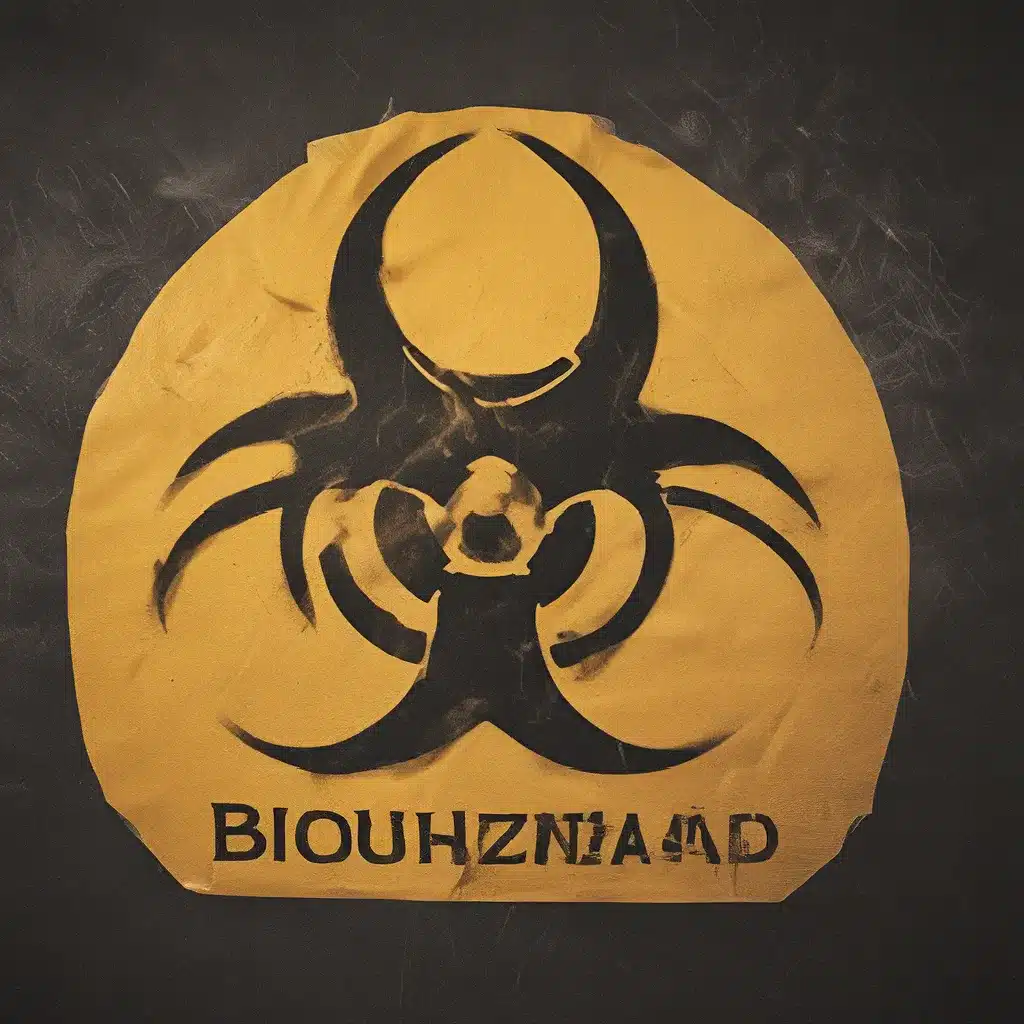As someone who has always been fascinated by the science of the microscopic world, I can tell you that navigating the complex landscape of biohazards is no easy feat. But fear not, my friends – with a little knowledge and the right precautions, you can safely explore the fascinating realm of microbes and viruses.
Unlocking the Secrets of Biosafety Levels
Let’s start with the basics: Biosafety Levels (BSLs). These are the guidelines that laboratories and researchers use to determine the appropriate safety measures for working with different types of biological agents. The levels range from BSL-1, which is the lowest risk, all the way up to BSL-4, which is reserved for the most dangerous and exotic pathogens known to humankind.
At the BSL-1 level, the microbes we’re dealing with are typically nonpathogenic – in other words, they’re not known to consistently cause disease in healthy adults. A classic example would be the humble Escherichia coli (or E. coli, as it’s more commonly known). These guys are just hanging out in our guts, minding their own business, and generally posing minimal risk to the average person. In a BSL-1 lab, you can work with these microbes on a standard lab bench, without any fancy personal protective equipment (PPE) or specialized containment facilities.
But as we move up the biosafety ladder, the stakes get a little higher. At the BSL-2 level, we’re talking about microbes that can cause moderate to severe diseases, like Staphylococcus aureus (better known as staph). These are typically indigenous microbes, meaning they’re commonly found in the local environment. In a BSL-2 lab, you’ll need to take some extra precautions, like using a biological safety cabinet (BSC) and wearing appropriate PPE, such as lab coats, gloves, and eye protection.
Things really start to get interesting (and a bit unnerving) when we reach the BSL-3 level. Here, we’re dealing with microbes that can cause serious or potentially lethal diseases, and they’re often spread through the respiratory route. Think Mycobacterium tuberculosis, the bacteria that causes tuberculosis. In a BSL-3 lab, you’ll need to take even more stringent measures, including the use of respirators and specialized facility design to ensure the microbes don’t escape into the wider community.
And finally, at the top of the biosafety pyramid, we have the BSL-4 level. This is where the most dangerous and exotic pathogens lurk, like the infamous Ebola and Marburg viruses. These microbes are typically aerosol-transmitted, meaning they can be spread through the air, and the infections they cause are often fatal without proper treatment or vaccines. Unsurprisingly, there are only a handful of BSL-4 labs in the world, and the safety protocols are off the charts. Think gas-tight containment suits, double HEPA-filtered air systems, and a level of precaution that would make even the most hardcore germaphobe swoon.
Navigating the Minefield of Biohazard Risks
Now, you might be wondering, “Okay, this is all fascinating, but how does it apply to my everyday life?” Well, my friends, the truth is that we’re all navigating a biohazard minefield to some degree, whether we realize it or not.
When you hire a professional cleaning service like Adam Cleaning, for example, you’re entrusting them to handle potentially hazardous materials with the utmost care and expertise. After all, who knows what kind of biological nasties might be lurking in that mysterious spill under the kitchen sink or the suspicious-looking stain in the bathroom?
And let’s not forget about the potential biohazards we encounter in our daily lives, from a cut finger to a bout of the flu. While most of us aren’t working in a high-containment BSL-3 or BSL-4 lab, we still need to be mindful of the risks and take appropriate precautions to protect ourselves and those around us.
Putting Biosafety into Practice
So, what does this all mean for you, the average person? Well, it’s actually pretty straightforward. The key is to understand the level of risk and to adjust your behavior accordingly.
For example, if you’re dealing with a minor cut or scrape, a good ol’ handwashing with soap and water is usually sufficient. But if you’re cleaning up a bodily fluid spill, you’ll want to don some gloves and maybe even a face shield to protect yourself from potential splash-back.
And when it comes to professional cleaning services, you’ll want to make sure they’re following the proper protocols for the level of biohazard they’re dealing with. A reputable company like Adam Cleaning will have rigorous training and safety procedures in place to ensure that any potentially hazardous materials are handled with the utmost care and caution.
It’s also worth noting that the science of biohazard management is constantly evolving. As new pathogens emerge and our understanding of existing ones deepens, the guidelines and best practices are regularly updated. So, it’s always a good idea to stay informed and to consult authoritative sources, like the Centers for Disease Control and Prevention (CDC), when it comes to navigating the ever-changing landscape of biological risks.
Embracing the Mysteries of the Microbial World
At the end of the day, the world of biohazards is a fascinating and complex one, full of both risks and wonders. While it’s important to be cautious and to take the necessary precautions, I encourage you to also embrace the mystery and curiosity that comes with exploring the microscopic realm.
After all, these tiny creatures have been shaping our world for billions of years, and they continue to hold the secrets to some of the most pressing challenges we face, from disease to environmental sustainability. So, let’s approach this topic with a sense of wonder and humility, and never stop learning about the incredible, often unseen, world that surrounds us.
Who knows, maybe one day, you could be the one to unlock the next big biohazard breakthrough. But for now, just focus on staying safe, staying informed, and embracing the amazing world of microbes and viruses. The journey is just beginning!







